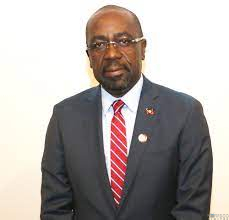By Robert A. Emmanuel
Stakeholders in the paint manufacturing industry and paint providers met yesterday with government officials, prompted by a letter and consultancy report from the Caricom Paint Manufacturers who called for an increase in the tariffs on US paint imports.
In their September 20 letter to the Minister of Trade, EP Chet Greene, the group requested a meeting to present their findings and seek government support for remedial measures via an alteration to the Caricom Common External Tariff.
They argue regional market for paints have suffered greatly from “major incursions on account of substantial under-pricing of paints from the United States.
The meeting which was held at the Office of the Office of the National Authorising Officer in Antigua and Barbuda (OANA), where the discussion focused on hearing opinions on the letter and report, commissioned by the lobbying group.
The group said that despite years of pressuring governments across the region, actions taken to address the issue had fallen short of their efficacy and there needed to be a whole of community response.
According to the group, the OECS and Less Developed Countries (LDCs) paint industry have benefitted from Article 164 of the Treaty of Chaguaramas, but US incursions have stymied further successes by eroding competitiveness and market share in the LDC and More Developed Country (MDC) markets.
Jason Holowchak of North Coast Hardware explained that, in his view, the motive of the report was to increase the tariffs on paint coming in from countries like Canada and US, something which could negatively impact consumer choice.
He based this on the already existing agreement between Caricom nations on paint tariffs.
“It meant at that point was, there was a 50 percent tax placed on any paints from outside of the group—the United States, Canada, Europe for example—and a 35 percent from the More Developed Countries to the LDCs so if you wanted to import paint from Trinidad to Antigua, there was a 35 percent tax,” he said.
He warned that the end result could see less choice and double the cost of paints for consumers.
He argued that the implications of this report’s suggestions could see a further market dominance of a few paint companies in the region.
Meanwhile, Permanent Secretary in the Minister of Trade and Caricom Ambassador Dr Clarence Henry issued his own response to the paint manufacturers, stating that another report needed to be done to independently verify many of the Paint Manufacturers’ claims.
“This so-called study cannot be taken at face value since it was not conducted by an independent consultant,” he wrote to the Minister of Trade.
He added that numerous consultations with organizations such as Cabinet, CROSQ and the Caricom Competition Commission (CCC) needed to be involved.
“The remedies offered in the study would impact the issue of choice and price for consumers and have implications for other paint service providers such as Sherwin Williams and North Coast, etc,” Dr Henry explained.
He noted the absence of information to show where the Caricom Regional Organization for Standards and Quality (CROSQ) and its own standards for paint intersected with the report and said that the CCC needed to be involved to investigate alleged abuse or unfair practices in the regional market space.
“Accordingly, it would be foolhardy to support what is clearly a heavily skewed study in favouring the regional paint manufacturers to prevent other operators from being competitive.
“We certainly cannot join in partitioning of the paint market in favour of [the manufacturers] to the detriment of a fair, open market competition where it is the consumers who make a choice in purchase of any commodity,” he wrote.


